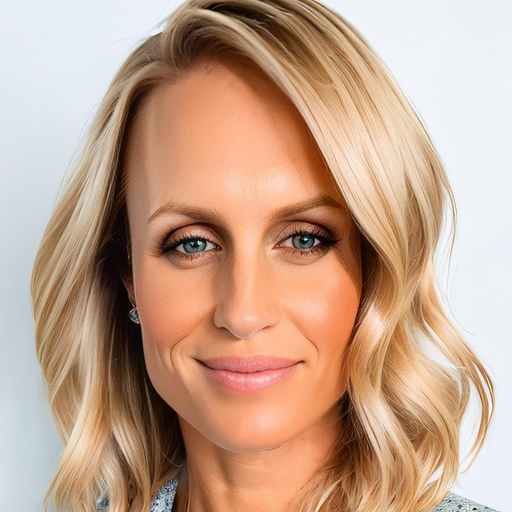Make Complex Data Simpler and Unlock Your Yoga Studio’s Full Potential with Zen Planner

There are many methods to grow a yoga studio from a small space with a handful of students to a well-known and respected business in the community. While many yoga studio owners gauge success by the size of their student base, a more comprehensive understanding emerges after examining metrics like revenue per member, retention rate, and new signups.
But what are these numbers really telling you? Each metric provides a snapshot of your studio’s performance:
- Revenue per member. This metric gives you a clear idea of how much each student is contributing to your studio; for example, are they just attending classes, or are they also participating in workshops and buying merchandise?
- Retention rate. A high retention rate suggests students are satisfied and see value in your offerings, serving as a testament to the quality of instruction and the environment you’ve cultivated at your yoga studio.
- New signups. Tracking new signups helps measure the effectiveness of your marketing efforts as well as the appeal of your yoga studio to new students.
A deeper understanding of these metrics will help you build a foundation for making strategic decisions for your yoga studio. The challenge often lies in analyzing data, however, especially when you’re already navigating the intricate maze of scheduling, billing, retail, and training.
Because we recognize these challenges, we’re introducing a comprehensive solution to simplify data analysis and address the multifaceted issues confronting your yoga studio. In this article, we not only delve deeper into these crucial metrics but also equip you with the tools to decipher complex data effortlessly, keeping you informed about your studio’s performance.
The challenge in collecting data for yoga studios
Collecting data for your yoga studio is infinitely more challenging if you don’t use automation or software for yoga studios. Here are some of the roadblocks when collecting data:
Privacy concerns
Yoga studios must be able to handle sensitive personal information securely, including attendance records, member retention data, and registration details.
Manual data collection
Many yoga studios still rely on manual methods for data collection, such as sign-in sheets or paper forms. These manual processes are time-consuming, prone to errors, and often result in incomplete or inaccurate data. Implementing yoga studio management software can significantly reduce the potential for these errors.
Not all yoga studio management software is created equal, however. Some, like Mindbody for example, can be cumbersome when it comes to extracting simple yet essential reports. You might find yourself wading through layers of options just to access basic straightforward data.
Zen Planner stands out in this competitive market, offering yoga studio owners an easy way to collect data and provide crucial information in real time, which makes it a preferred choice for many studios looking for efficiency and accuracy.
Data integration
Yoga studios often employ a variety of applications to oversee operations, ranging from attendance tracking and membership management to registration.
Data consistency and quality
Maintaining consistent, high-quality data becomes challenging when manual input is required, or when multiple people are collecting and entering information. Adopting integrated yoga studio management software streamlines the data collection process and enhances accuracy.
Data interpretation
Accurate data is valuable, but interpreting it can be a hurdle for many busy yoga studio owners. Making informed decisions based on this data requires clear insights. Zen Planner’s yoga studio software offers advanced features to enhance operations, providing user-friendly reports to help studio owners navigate and comprehend their data more easily.
How Zen Planner makes data collection easier
Zen Planner stands out as a leader in yoga studio management software, unifying operations and delivering data in a user-friendly format. With Zen Planner, you don’t have to manually track and input the important metrics in your studio through spreadsheets.
Once a student’s profile is created, their progress, transactions, attendance, and even messages within the studio are safely kept in our database in case you need them for insights. Zen Planner can also track class popularity, digital marketing efforts, and even survey results.
Key data points and metrics for yoga studios
Zen Planner offers a comprehensive solution for meeting the challenges associated with data collection, focusing on several crucial metrics to gain valuable insights into your studio’s performance.
Let’s delve into the metrics that Zen Planner measures when analyzing data.
Student and staff attendance
Student attendance serves as an important metric to assess growth in your yoga studio. Zen Planner tracks overall attendance, identifies peak hours and days, and pinpoints the most popular classes in your studio.
Effective communication between teachers and students is critical too. Instructors who maintain attendance in their classes and are dedicated to nurturing student progress are able to cultivate loyal followings.
Member retention
Besides attendance, member retention is a vital indicator of member satisfaction. This metric measures the percentage of members renewing their memberships, tracks average duration, monitors absentees, and identifies reasons behind membership cancellations.
Revenue
Monitoring financial metrics is key to your studio’s sustainability and growth. Zen Planner yoga studio software simplifies this with an automated payment feature, eliminating manual payment hassles. Zen Planner also provides clear insights on your revenue streams, bills, and auto-payments from students, including identifying memberships that will expire soon.
Suggested read: Payments Security is Essential to Your Business
Marketing
The strategic evaluation of marketing strategies is essential to protecting your investment. Key metrics include lead generation, lead-to-member conversion rates, and marketing return on investment (ROI). With Zen Planner, studios can develop integrated websites and manage impactful social media campaigns, including performance metrics right on your dashboard.
Teacher performance
Not only is it important to monitor member attendance and metrics, it is also important to build awareness around your teachers’ performance and key indicators like student feedback and class ratings. Instructors play a significant role in shaping your studio’s atmosphere and brand. By staying informed of their class dynamics, new student enrollments, and overall engagement, you ensure consistent quality across the board.
Consider offering training programs for your teachers too, providing the following benefits:
- Expanding instructor knowledge. Ongoing training ensures that your teachers stay updated with the latest techniques, trends, and teachings in yoga, providing a richer experience to your students.
- Creating a new revenue stream. These programs should be appealing to current teachers for your studio, as well external yoga enthusiasts, providing a significant source of income for the studio.
- Cultivating a growth-minded community. By fostering an environment of continuous learning, you create a culture where both teachers and students prioritize growth and development.
Zen Planner aims for clarity and efficiency in reporting on metrics like attendance, class ratings, and feedback from students. With over 110 pre-constructed reports, studios can customize their dashboard for instantaneous insights, ensuring every studio owner has easy access to crucial data.
How to collect and analyze data in your yoga studio
Collecting and analyzing data in a systematic manner is key to the success of your yoga studio. Let’s review the fundamental steps in this process:
- Determine data and key performance indicators (KPIs). Pinpoint crucial metrics for your yoga studio’s success.
- Identify data sources. Recognize where data originates from in terms of registration systems, attendance logs, or financial records.
- Select a data-collection method. Decide between manual entry, electronic systems, or integrated software solutions.
- Adopt a systematic approach to data collection. Guarantee consistent data collection and ensure that it’s stored securely.
- Analyze the data. Employ analytics tools or software for an in-depth understanding.
- Visualize the data. Use graphs, charts, and dashboards for a clearer representation.
Consistently sourcing, extracting, and analyzing financial and member data can be a complex task. Add to that the challenges of not having a specialized manager and budget constraints, and the task becomes even more daunting.
Zen Planner’s custom reporting functionality provides the essential data points you need for your studio. This software system allows you to monitor the performance of your business on a daily, weekly, or monthly basis. The flexibility to customize your dashboard with specific metrics, such as past due invoices or average daily attendance, provides you with a concise performance snapshot. This eliminates the stress of sourcing multiple reports from various places. Empowered with these insights, you’re better positioned to make well-informed decisions that will propel your business forward.
Interpreting data and making data-informed decisions for your yoga studio
After gathering your data using Zen Planner’s dashboard, it’s essential to collaborate with your team or other stakeholders to interpret the insights. These three methods will help you interpret data effectively.
Identifying key performance indicators (KPIs)
Defining your KPIs is crucial because they serve as benchmarks for your yoga studio’s success, and aid in informed decision-making. By consistently tracking your KPI’s (weekly, monthly and/or quarterly), you gain insights into your progress and make it easier to set future goals.
As an example, if your key objective is to increase member retention, track membership cancellations, new membership sign-ups, and weekly visits per member. A rising trend in cancellations, coupled with less new members, suggests member retention is suffering.
At that point, it’s critical to consider options for member retention. For great ideas to improve your member retention, check out this blog that breaks down simple student retention tips for yoga studios.
KPIs you can track for your yoga studio using Zen Planner’s yoga studio management software:
- Revenue per member
- Average class attendance
- Member retention rate
- Profit margin
- Average daily attendance
- Revenue per session/class
- Earnings before interest, taxes, depreciation, and amortization
- Revenue per square foot
Review your KPIs monthly to monitor progress toward your studio’s growth objectives. Check out this blog that expounds on the eight KPIs fitness businesses should be tracking.
Monitoring external factors
External factors also have a significant effect on your studio’s growth. You may experience a seasonal boom in January as members make New Year’s resolutions and establish new fitness goals, while the summer often reflects a dip as people enjoy being outside more.
To gain a deeper understanding of the external factors that may impact your yoga studio’s growth, consider using the PESTEL financial analysis framework that examines six critical areas:
- Politics. Consider government policies or decisions that might influence your yoga studio.
- Economics. These include economic growth or decline, changes in interest rates, and increased inflation. If the economy isn’t doing well, some members may delay payments or cancel subscriptions to make ends meet.
- Social. Monitor trends in demographics and societal behaviors. These insights can reveal evolving student preferences and highlight areas that require adaptation.
- Technology. Monitor innovation and trends that drive industries forward, including automation, technology awareness and adoption rates, and the introduction of new services and products.
- Environment. Pay attention to ecological concerns as well as seasonal patterns. For example, winter might result in fewer attendees at your yoga studio.
- Legal. Stay updated on current legal provisions in your area. These include health and safety requirements, labor laws and consumer protection laws.
External factors can also include trends, celebrations, developments, and changes in your industry. Review member attendance data for greater insights that will help you to identify potential correlations with external events.
Conducting a scenario analysis
Conducting a scenario analysis allows you to run different scenarios, analyzing the risks and benefits in exploring different options and possible revenue growth for your yoga studio. This strategy allows you to make more informed decisions about what path you want to take — or what changes to make — based on a greater understanding of the competition, demographics for your members, and market trends.
Use the following steps to complete an effective scenario analysis.
Step One: Identify issues and gather data
Begin by identifying the key issues you want to address. The PESTEL analysis is an excellent tool for gathering relevant data.
Consider the following factors for a yoga studio:
- Local market demand for yoga and fitness services.
- Competition from other yoga studios.
- Economic conditions that may affect people’s disposable income and willingness to spend on yoga classes.
- Student preferences regarding yoga classes and teaching methods.
- The impact of location on accessibility to the studio and reaching the target audience.
Step Two: Identify potential uncertainties
Identify potential scenarios — both positive and negative — that could impact your yoga studio:
- Competition from new yoga studios opening in the area.
- Economic downturns affecting discretionary spending.
- Changes in student preferences due to new yoga trends.
- Lack of available, qualified teachers.
- An increase, or decrease, in the popularity of yoga as a fitness choice.
- The studio’s ability to cater to new trends and diverse member preferences.
Step Three: Develop scenarios and strategies
Think of potential scenarios that could influence your yoga studio. By mapping out both beneficial and detrimental outcomes, you’ll be better equipped to navigate any challenges that arise. Consider the following scenarios.
Positive Scenarios:
- Market demand for yoga continues to increase steadily.
- The studio differentiates itself through unique class offerings, exceptional instruction, and member experience.
- Minimal competition arises, and the studio establishes a strong brand presence.
- Economic conditions remain stable, allowing for sustained student spending on yoga classes.
- A consistent staff/team of highly qualified, student-centric teachers are available and want to be part of your team.
Negative Scenarios:
- Increased competition from new yoga studios impacts market share.
- Economic downturn diminishes spending on yoga classes.
- Student preferences shift toward other fitness activities.
- Difficulty finding and retaining qualified teachers.
After considering these scenarios, assess risks and opportunities for your yoga studio, then tailor your strategies accordingly.
Consider KPIs as a lens to view past performance, external factors to understand the present landscape, and scenario analysis to forecast future possibilities. Together, these tools furnish a comprehensive understanding essential for steering your yoga studio in the right direction.
Data-driven decision-making with Zen Planner’s yoga studio management software
Zen Planner’s yoga studio management software provides advantages like real-time and automated data collection.
Make informed decisions with confidence
Automated data makes it possible for you to be more confident in analyzing factors like market demand, student preferences, and the competition. If you identify a popular new trend in yoga, for example, you can adjust class offerings accordingly based on hard facts rather than relying on just a gut feeling.
Remain unbiased
Data-driven decision-making allows you to avoid bias and move forward objectively. Instead of making decisions based solely on personal preferences or assumptions about client preferences, you can refer to data from surveys or feedback forms to understand your target audience and make decisions for their benefit.
Set measurable goals
Reviewing key data points will help you set achievable targets, which are crucial for consistent member growth. If data analysis reflects a monthly average of 100 students, you could set a goal to increase this number by 20% in the following year, targeting 120 students monthly.
You can also increase the number of students attending your yoga studio by exploring Zen Planner’s best ideas for growth.
Optimize business operations
Data insights can enhance various studio operations. Financial data, for example, can guide pricing decisions, budget allocation, and cost management. Additionally, student feedback can spotlight areas for improvement and ensure a better experience for all your members.
Maximize your yoga studio with Zen Planner
Zen Planner offers a comprehensive suite of management tools, including integrated billing features such as automated bank transfers and streamlined payment processing. Zen Planner’s yoga studio software also simplifies financial oversight with its intuitive reporting system.
A user-friendly scheduling interface is another helpful benefit, making it possible for you to organize classes and embed schedules on your primary website. Members can then make reservations easily, enjoy classes, and stay updated on studio events with the Zen Planner member app. This suite of tools is further enriched with features for monitoring attendance and retention.

I’m Coach Kelli, a devoted CrossFit gym owner with 15 years of experience managing my facility, along with owning yoga studios and wellness centers. Beyond the fitness world, I have a passion for cooking, cherish moments with my children and family, and find joy in spending time outside. Having experienced the highs and lows, I’m dedicated to leveraging my expertise to help you grow and succeed on your fitness journey.

I’m Coach Kelli, a devoted CrossFit gym owner with 15 years of experience managing my facility, along with owning yoga studios and wellness centers. Beyond the fitness world, I have a passion for cooking, cherish moments with my children and family, and find joy in spending time outside. Having experienced the highs and lows, I’m dedicated to leveraging my expertise to help you grow and succeed on your fitness journey.







